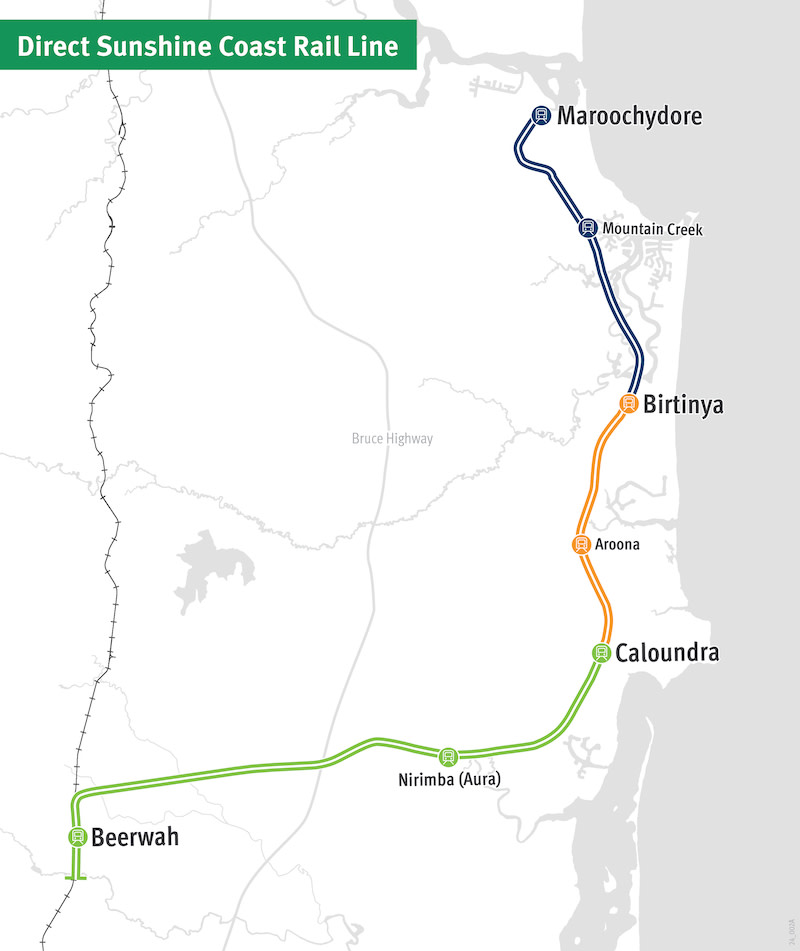
The Queensland Government has put up $2.75 billion towards a rail connection that would make a trip from Caloundra to Brisbane at least 45 minutes speedier than by car.
The funding has been committed for the first stage of the Direct Sunshine Coast Rail Line project, which includes protection of the updated rail alignment to Maroochydore.
The first stage is a 19km dual track from Beerwah to Caloundra, the longest spur line in the south-east passenger network.
The line is a proposed 37.8km rail extension between Beerwah and Maroochydore to increase public transport opportunities and improve connectivity to Moreton Bay, Brisbane and beyond.
It would be delivered in stages and will bring faster rail to the Sunshine Coast with trains able to reach 140km/h on some sections.
The realignment as part of stage 1 aims to minimise environmental impact and reduce curves in the line to allow for faster train speeds.
The Beerwah-Caloundra stage could be operational in time for Brisbane 2032, subject to a matched funding agreement from the Federal Government, the State Government said.
“The Sunshine Coast is one of the fastest-growing regions in the state, and is forecast to be home to 600,000 people by 2046,” the Government said.
“Modelling shows most of the population growth will be concentrated along the first stage of the rail line, around Caloundra South (Aura).

“Stage 1 of the Direct Sunshine Coast Rail Line will be a significant enabler for new housing, including supply for 50,000 people at Caloundra South and up to 100,000 people at Beerwah East.”
The Government said it expected the initial stage of the project would accelerate the delivery of more than 3000 affordable and diverse homes already planned.
The funding envelope for Stage 1 is expected to be $5.5 billion to $7 billion, with final costs to be confirmed at the completion of the procurement phase.
“A direct rail connection to the Sunshine Coast will unlock thousands of homes in the growing Sunshine Coast region and accelerate the release of new, affordable developments,” Premier Steven Miles said.
“Without the rail line, that development would bring an unmanageable level of congestion to the local road network, making this connection essential for new housing to be brought forward.”